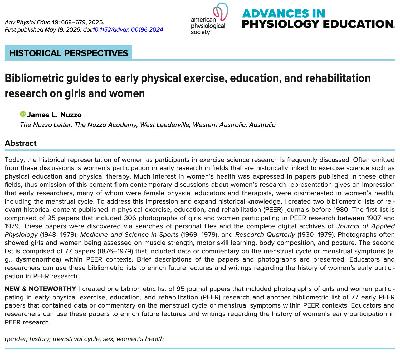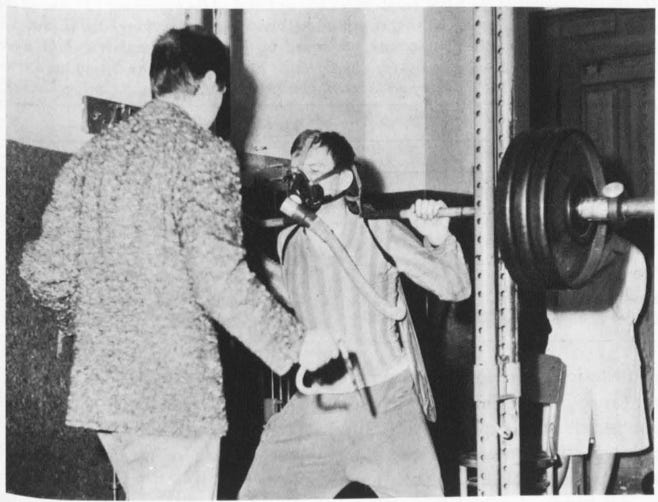“Mankeeping” - Academia’s Latest Attack on Men
Description
Just when you thought the unrelenting attacks on men from academia could not get any worse, they have.
In the journal Psychology of Men & Masculinities, the concept “mankeeping” was recently introduced by Angelica Ferrara and Dylan Vergara of the Clayman Institute for Gender Research at Stanford University. The title of their paper was, “Theorizing Mankeeping: The Male Friendship Recession and Women’s Associated Labor as a Structural Component of Gender Inequality.”
“Mankeeping” adds to the litany of words and concepts that academics have created to ridicule the male sex. Other examples include “toxic masculinity,” “male privilege,” “mansplaining,” “manels,” and “manferences.”
Ferrara and Vergara defined “mankeeping” as “the labor that women take on to shore up losses in men’s social networks and reduce the burden of men’s isolation on families, the heterosexual bond, and on men.” And, they added:“[m]ankeeping is best conceived as a mechanism through which women support and bolster men’s levels of social support.”
According to Ferrara and Vergara, “mankeeping” is a form of women’s unpaid and unequal emotional care work. Some examples of this “invisibilized labor” provided by the authors included the following:
* A woman suggesting that her husband reconnect with old friends
* A girlfriend facilitating a group outing to help her boyfriend bond with other men
* A wife sending a husband on a “man date” with other men
* A mother suggesting to her son that he contact his friends
* A woman reminding a man to join a men’s group
* A woman “checking in on her husband’s emotional state after learning he has had a stressful day at work”
* A wife helping her husband “articulate his own feelings through a process of deciphering limited social and emotional cues”
And what are the fundamental causes and final consequences of “mankeeping”? According to the authors, “mankeeping” is “a component of patriarchy’s persistence within the heterosexual bond, asserting that an unequal distribution of social support is part and parcel of the everyday social reproduction of gender inequality.”
To summarize, the flow of ideas underlying Ferrara and Vergara’s concept of “mankeeping” goes as follows:
* Increased numbers of men are lonely or social disconnected;
* Women have to pick up the slack in men’s lack of social relationships;
* Women perform unpaid labor when serving as social and emotional facilitators for men;
* Women’s social and emotional labor is unpaid and unequal and therefore it reinforces the patriarchy and exacerbates gender inequality.
Here, my purpose is to highlight various flaws with Ferrara and Vergara’s concept of “mankeeping.”
Lack of Empathy for Men
The first issue with Ferrara and Vergara’s concept of “mankeeping” is that it lacks empathy for men. To the extent that men are lacking healthy social relationships, the focus of a paper in a “men and masculinities” journal ought to be the causes and solutions of men’s mental and emotional health issues. Yet, in predictable gynocentric fashion, the authors made the story about women.
“Men and masculinities scholars must interrogate how the effects of these trends, while troubling for men themselves, may cascade beyond men.”
In other words, men’s health is merely a launching pad for discussing additional ways that society can accommodate women.
To further illustrate the degree to which the authors had no interest in discussing men’s health, one need only look at the incoherent sentence where the authors placed the phrase “male issue” in quotes. This was done, presumably, to mock or minimize the notion that men’s health, not gender inequality, be the main point of discussion.
“To conceptualize men’s thinner social networks as a mere symptom of gender inequality, or a “male issue,” rather than a structural component of how patriarchy is upheld and reproduced, is to miss a critical avenue for social change. Our concept of mankeeping presents one mechanism through which men’s social isolation could reproduce existing inequalities…”
Women as Social Beings and Carers
Another issue with Ferrara and Vergara’s concept of “mankeeping” is that it seems to assume that men and women would, if unchained from the restrictive patriarchy, exhibit near-identical social behaviors and indicators and that women would not be more inclined than men to want be emotional carers. But on what grounds are such assumptions made, given the substantial research literature on sex differences in preferences, interests, and behaviours?
Sex differences in vocational interests is one example. Women are more likely than men to prefer working with people than things, whereas men are more likely than women to prefer working with things than people. This is why more women than men study and work in fields like psychology and social work. In fact, psychology and social work are also fields that involve providing emotional care to others (i.e., “mankeeping” or “womankeeping”) and thus also illustrate the greater female than male inclination for wanting to provide emotional care to both men and women.
Other lines of evidence also point to women being naturally more social than men. The American Time Use Survey consistently shows that women spend more time than men “socializing and communicating,” including in face-to-face interactions, hosting or attending social events, and communicating with others via the telephone and internet. A recent Pew poll of over 6,000 American residents also found that women were more likely than men to keep in touch with friends by phone, text, and social media.
Thus, women appear to acquire much value and meaning out of life from frequent social interactions. Many of these interactions will involve emotional care for others. These sex differences are likely biologically driven. Results from a study in hamsters suggest that the average female and male brain respond differently to social interactions, with oxytocin playing a key role in the heightened female response.
Relationship Trade-Offs
Ferrara and Vergara’s failure to reference the biological basis of sex differences then leads to lack of acknowledgement of trade-offs in relationships. Their presentation of male-female relationships was one-sided: the woman does the vast majority of the care work and apparently the man offers very little in return.
A man and a woman both bring unique attributes to a partnership. The man could be any number of things: funny, caring, rich, intelligent, a hard worker, physically attractive, friendly, reliable, the father of their children, good at fixing things around the house, good at making the woman feel safe and protected, etc. These characteristics would all be reasons why his female partner would want to care for him. It is in her self-interest to do so. Without him, she loses her greatest value.
Yet, instead of discussing trade-offs in partnerships, and the unique currency that men bring to the relationship exchange, Ferrara and Vergara presented a story in which women’s emotional care work is presented independent of the larger context of the natural given and take of romantic partnerships. For example, whereas a wife might take on more of the unpaid household work, her husband might take on more of the paid work outside the home (often at risk to his health), such that when hours of all work are summed, men and women contribute roughly equally to the partnership. Thus, to the extent that women might be providing a disproportionate amount of emotional care, men are likely providing their own unique type of care at a disproportionate level. In fact, the husband’s job might be paying for all of his wife’s healthcare!
Women’s Perceptions of Emotional Care
Ferrara and Vergara also do not account for women’s perception of how much
























